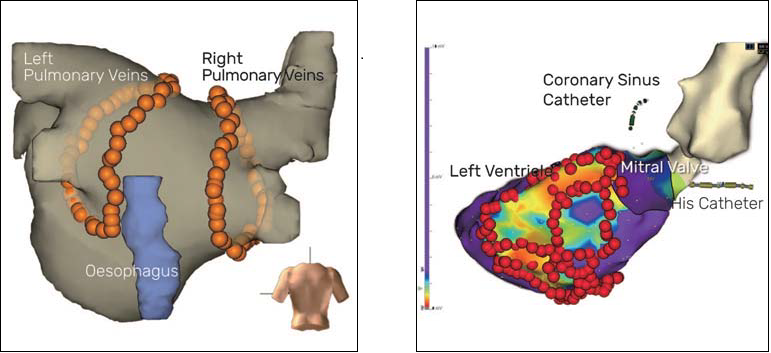What is it
Catheter ablation is the technique during which catheters (small flexible tube) with electrodes (able to record and display the electrical activity of the heart on a monitor) are threaded up to the heart, in order to identify the area causing the tachycardia (fast heart beats). An ablation (a permanent damage) of the abnormally active heart cells is achieved with the delivery of heat or cold energy. Catheter ablation is performed in the chambers collecting (the atria) and pumping (the ventricles) blood with risk and success rates that vary depending from the specific arrhythmia. Nowadays, so called three-dimensional mapping system are routinely used in order to improve efficacy and safety, allowing precise movements in the heart without the need to use fluoroscopy, therefore dramatically reducing X-ray exposure (Fig. 6&7). Patients are usually discharged 2 days after the operation.



